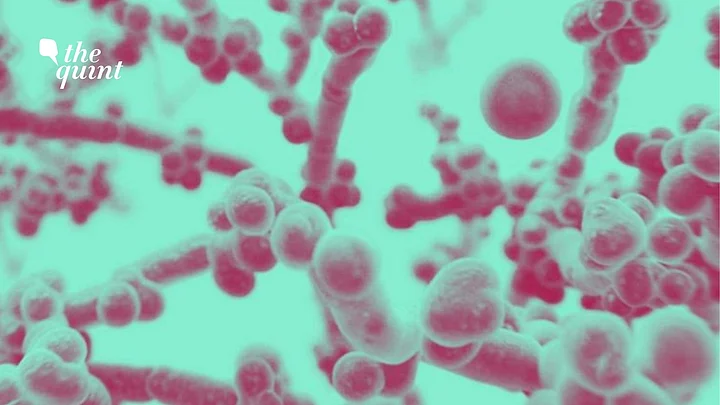Amid the scare of Mucormycosis or 'black fungus', reports of an infection called 'white fungus' in Bihar has spurred fear across the country which is reeling under the devastating second wave of the COVID pandemic.
Four cases of ‘candidiasis’, colloquially called ‘white fungus’ have been detected at the government-run Patna Medical College and Hospital (PMCH) on 19 May, according to health officials.
What is white fungus? What causes it? Why has the infection raised an alarm? FIT spoke to Dr Sumit Ray, critical care specialist at Holy Family Hospital in Delhi, to know more about the infection.
What is ‘white fungus’ or ‘candidiasis’ ?
According to the US Center for Disease Control and Prevention (CDC), Candidiasis is a fungal infection caused by a yeast (a type of fungus) called Candida. The white fungus is basically a Candida.
Candida normally lives on the skin and inside the body. However, it can cause infections if it grows out of control or if it enters deep into the body – the bloodstream or internal organs like the kidney, heart, or brain.
Is COVID causing white fungus?
While COVID patients are susceptible to white fungus, it is not the only cause.
With severe infections, the immunity is affected in some people, especially those with diabetes, chronic kidney disease, AIDS etc. They are the ones who are more prone to it. Any one who is immunocompromised due to any other reasons are also prone to fungal infections.
“Mostly, there have been more cases of white fungus. Mucor, however, is an unusual infection,” Dr Ray said.
Is ‘white fungus’ a cause for concern?
Dr Sumit Ray said the infection is not new and that it is being treated since several years now. "In the ICU, many patients, even non-COVID patients, get this infection. It is a well-known infection," he said.
However, that doesn’t mean that it is a not difficult or worrying infection, Dr Ray added.
Any critically ill person is prone to what is called ‘invasive candidiasis’...A severe infection can lead to a secondary infection. If you have a severe septicemia because of bacterial infection or viral infections, you can get a secondary fungal infection because of the immunity being compromised.Dr Sumit Ray, critical care specialist at Holy Family Hospital, Delhi
The infection can be treated with plenty of medication. However, in spite of medication, a certain percentage with severe secondary infection die. “That has been true not only of COVID, but of all critically ill patients.”
Is it deadlier than black fungus?
Amid several news reports suggesting white fungus is more dangerous than the black fungus, Dr Ray thinks calling it “deadlier” without a context is wrong.
For black fungus, how dangerous it is, depends on the location of the infection. “If it is rhinocerebral, in the nose and the going into the brain, then there is 95 percent mortality...and nearly 90 percent mortality in significant rhinocerebral infection,” Dr Ray said.
The mortality rate in candidiasis is much lower, he said. It also depends on the site of infection and how immune compromised the person is.
Unlike candida infections in the mouth and throat or vaginal “yeast infections,” invasive candidiasis is a serious infection that can affect the blood, heart, brain, eyes, bones, and other parts of the body.
“Thus, when it is invasive into the tissues, it could cause higher mortality anywhere between 20 to 50 percent in critically ill patients,” Dr Ray said.
What are the treatments?
According to the CDC, candidiasis in the mouth, throat, or esophagus is usually treated with antifungal medicine.
Medications include clotrimazole, miconazole, or nystatin. For severe infections, the most common treatment is fluconazole (an antifungal medication) taken by mouth or through a vein.
The treatment for candidiasis in the esophagus is usually fluconazole. Other types of prescription for antifungal medicines can also be used for people who can’t take fluconazole or who don’t get better after taking fluconazole, CDC says.
For invasive candidiasis, the medication usually depends on the patient’s age, immune status, and location and severity of the infection.
“We have been dealing with it for decades and there are medicines for it. But like all severe infections, secondary infections, there will be some who will succumb to it in spite of the medicines being available,” Dr Ray said.
(This story was first published in FIT and has been republished with permission.)
